Discover Constellations - Explore Space Network Technologies with Industry Leaders
Constellations - Explore Space Network Technologies with Industry Leaders

Constellations - Explore Space Network Technologies with Industry Leaders
Author: Kratos
Subscribed: 284Played: 7,248Subscribe
Share
© Kratos Defense & Security Solutions
Description
Constellations is your connection to the innovators, business leaders, entrepreneurs and policy makers who are making—and remaking—today's satellite and space networks.
Whether you're in the industry or just have a desire to learn, this podcast is for you.
For more information and to subscribe to the biweekly newsletter go to www.ConstellationsMag.com
Whether you're in the industry or just have a desire to learn, this podcast is for you.
For more information and to subscribe to the biweekly newsletter go to www.ConstellationsMag.com
243 Episodes
Reverse
As we near the close of 2025, it's a pivotal moment to reflect on this past year and the advances and changes that have impacted the industry. From the introduction of Golden Dome, expansion of Starlink's dominance, growth in Direct-to-Device (D2D) to sovereignty becoming a driving force for nation states—2025 has been a whirlwind. How will these trends shape 2026 and beyond? To help us break down the most significant happenings and provide expert insight into what it all means for our industry, we are joined by Chris Quilty, Co-CEO & President and Caleb Henry, Director of Research for Quilty Space, a global leader in space sector business intelligence.
Space is getting crowded, how do we avoid conjunctions? In this episode of Constellations, Kayhan Space CEO, Dr. Siamak Hesar, joins to discuss how operators can stay ahead of risk as the orbital environment grows more crowded and complex. He shares practical insights on collision avoidance, real time data integration and the value of AI tools that help fleets make faster, smarter operational decisions. It is a forward-looking conversation about how the industry can work together to keep space safe, sustainable and mission ready.
As the lines between commercial innovation and national defense blur, America's space industrial base is transforming. In this episode of Constellations, Peter Krauss, President and CEO of Terran Orbital, emphasizes the importance of rapid iteration and accelerated development to build and deploy on-orbit assets more efficiently. Speed is the primary transformation reshaping the industry, driven largely by the realities of contested space. Hear Peter talk about this and what keeps him up at night.
With more than 50% of the Earth covered in clouds on any given day, the ability to provide real-time insights about what is happening on the ground becomes complicated and nearly impossible. Listen in as Aubrey Dunne – co-founder and CTO at Ubotica - shares his knowledge on AI-based intelligence, cloud detection and removal for Earth observation satellites that deliver insights about what's happening on Earth now.
In today's satellite industry, the ability to refuel satellites in orbit is key to building a dynamic space operation. As space mobility and logistics become more advanced, refueling in GEO will give a significant advantage to military customers and commercial operators. Will Armijo, VP of Space Systems at Orion Space Solutions, breaks down the path to robust refueling technology.
In today's rapidly changing world there are threats, natural disasters and environmental changes that can occur without notice that can negatively impact business and government operations. Delivering persistent, high-resolution insights anytime and anywhere using remote sensing is critical. Listen to this episode to better understand the powerful capabilities of high-resolution SAR imaging.
As satellites become more maneuverable and denial strategies evolve, orbit selection and agility are shaping the future of space advantage. In this episode, Tom Campbell, President of Space Missions at Redwire joins us to discuss the benefits of various orbital regimes, the role of maneuverability in maintaining resilience and how technology is enabling new strategies for contested space.
SpaceX has an outsized influence on the satellite industry as the preeminent launch provider. But in 2024, revenue from Starlink outstripped launch for the first time. Grace Khanuja, Manager at Novaspace, discusses Novaspace's biannual report on SpaceX, the growing verticals that SpaceX will likely target in the next few years, and what it will take for satcom to compete with fiber.
Did you know that a graphing calculator has more processing power than most satellites? In this episode, hear how Edward Ge, Co-Founder and CEO of Aethero, is working to change all of that by building the next generation of space-grade computers for computationally heavy space missions. Listen as he shared the details on what it takes to build powerful compute for space, how it benefits the industry and some of the challenges still ahead.
Advancing the security and resilience of the space industry is the goal of the Space ISAC, requiring universally adopted standards with extensive testing and information sharing. Join Erin Miller, Executive Director of the Space Information Sharing and Analysis Center, and Lori Gordon, Systems Director for Space Enterprise Evolution at The Aerospace Corporation, as they discuss a new cybersecurity standard setting the foundation for trusted interoperable space systems.
Ahead of the upcoming World Space Business Week, Constellations and Novaspace bring you a limited podcast series where 5 space leaders answer 3 questions about the state of the industry, what drives them and the challenges ahead. Listen now to John Serafini, CEO of Hawkeye 360. Hawkeye 360's rapidly expanding RF constellation and next-generation analytics are fueling defense innovation, leveraging recent regulatory streamlining, and providing trusted, profitable geospatial intelligence across every continent and ocean. Other guests are: Jason Kim, CEO of Firefly, Jean-François Fallacher, CEO of Eutelsat Group, Phil Carrai, President, Kratos Space and Even Rogers, CEO and Co-Founder of True Anomaly.
Ahead of the upcoming World Space Business Week, Constellations and Novaspace bring you a limited podcast series where 5 space leaders answer 3 questions about the state of the industry, what drives them and the challenges ahead. Listen now to Jean-François Fallacher, CEO of Eutelsat Group. Eutelsat's GEO+LEO push aligns with rising demand for sovereign constellations and a new state-backed capital raise. Other guests are: Jason Kim, CEO of Firefly Aerospace, John Serafini, CEO of Hawkeye 360, Phil Carrai, President, Kratos Space and Even Rogers, CEO and Co-Founder of True Anomaly.
Ahead of the upcoming World Space Business Week, Constellations and Novaspace bring you a limited podcast series where 5 space leaders answer 3 questions about the state of the industry, what drives them and the challenges ahead. Listen now to Phil Carrai, President, Kratos Space. Kratos highlights a 5G NTN over GEO demonstration and argues the winners will deliver working products, match customer spend patterns, and fit into real operational workflows. Other guests are: Jason Kim, CEO of Firefly Aerospace, John Serafini, CEO of Hawkeye 360, Jean-François Fallacher, CEO of Eutelsat Group and Even Rogers, CEO and Co-Founder of True Anomaly.
Ahead of the upcoming World Space Business Week, Constellations and Novaspace bring you a limited podcast series where 5 space leaders answer 3 questions about the state of the industry, what drives them and the challenges ahead. Listen now to Even Rogers, CEO and Co-Founder of True Anomaly. True Anomaly details a $260M Series C, lessons from Mission X toward MX-3 while building a small-form-factor "fighter-interceptor" for space superiority, and sees strong investor appetite for space and defense ahead. Other guests are: Jason Kim, CEO of Firefly Aerospace, John Serafini, CEO of Hawkeye 360, Jean-François Fallacher, CEO of Eutelsat Group and Phil Carrai, President, Kratos Space.
Ahead of the upcoming World Space Business Week, Constellations and Novaspace bring you a limited podcast series where 5 space leaders answer 3 questions about the state of the industry, what drives them and the challenges ahead. Listen now to Jason Kim, CEO of Firefly. Explore Firefly Aerospace's recent lunar landing success, upcoming Blue Ghost missions, and the launch of its high‑resolution Ocula Lunar Imaging Service set to transform cislunar exploration. Other guests are: John Serafini, CEO of Hawkeye 360, Jean-François Fallacher, CEO of Eutelsat Group, Phil Carrai, President, Kratos Space and Even Rogers, CEO and Co-Founder of True Anomaly.
Cislunar space may be the ultimate high ground, but its vast distance poses challenges in infrastructure, timing and tracking. Join Elvis Silva, Executive Director of Business Development and Strategy at Blue Canyon Technologies, RTX's smallsat manufacturer, as he explores how advances in sensing, timing synchronization and spacecraft autonomy are reshaping our ability to operate and secure this critical domain.
The promise of seamlessly roaming across satellite networks in different bands and different orbits is that much closer to reality. A new breakthrough in multi-band antenna technology holds the potential to make communications as seamless and automated as the cellular networks used today. Listen to Ryan Stevenson, Chief Scientist at Kymeta talks about the capabilities of the new multi-band antenna technology and discuss the potential it offers to re-define satcom connectivity for a range of applications from military to aero.
Jiral Shah from Gravitics discusses next-generation space structures and modular space station platforms. Hear Jiral Shal emphasizes the ability to work within a timeline that aligns with operational tempos, measured in hours, not days. He discusses how logistics and mobility are key to moving faster, supported by pre-positioned assets in orbit, rather than a dependence on terrestrial launch for a next layer of resiliency. He also mentions power being a commodity in space, and how access to large amounts of power, specifically nuclear power, will unlock many applications and fundamentally change everything.
Matt Magaña from Voyager Technologies discusses how partnerships can accelerate space innovation. Matt will explain why these collaborations are more crucial than ever, particularly in overcoming the "valley of death" through shared technology. He'll also touch on the challenges of government funding with OTAs and mission-based awards, and why building a robust space industrial base requires more conversation and investment.
From agriculture to collision avoidance, space data is becoming continuously more important in decision-making and predictive analytics for many industries in going about their day-to-day tasks. In this podcast, hear Yudhajeet Dasgupta, Head of Solutions Architecture Aerospace and Satellite at AWS, share his knowledge on cloud computing for space and all the ways generative AI can help make life on earth more efficient for humanity.


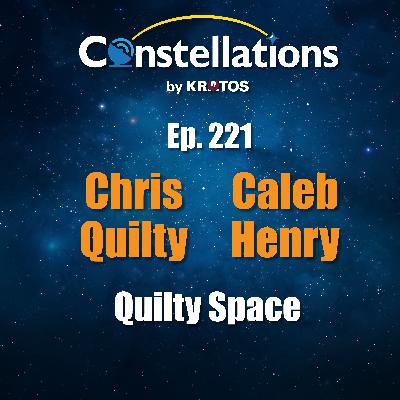
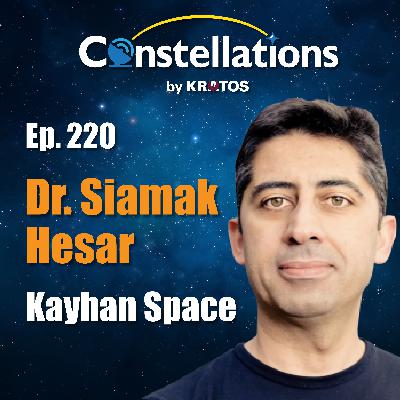
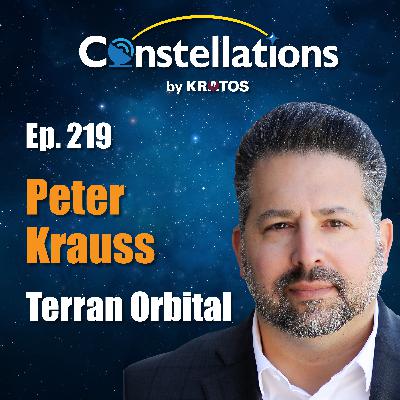
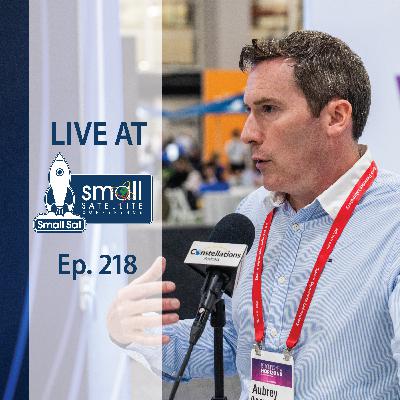
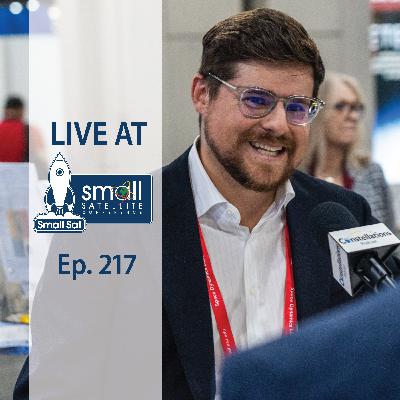




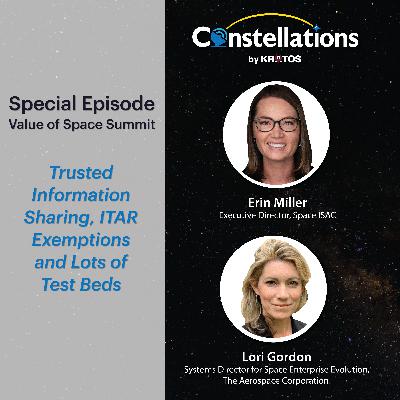
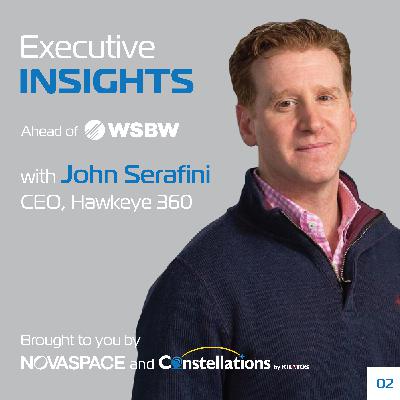
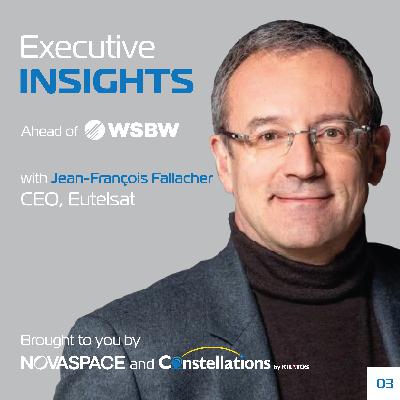
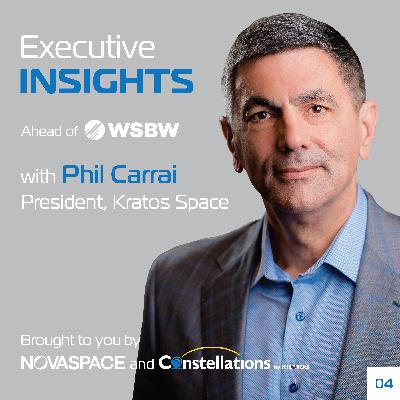
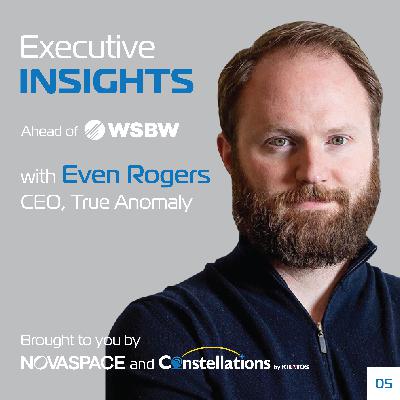

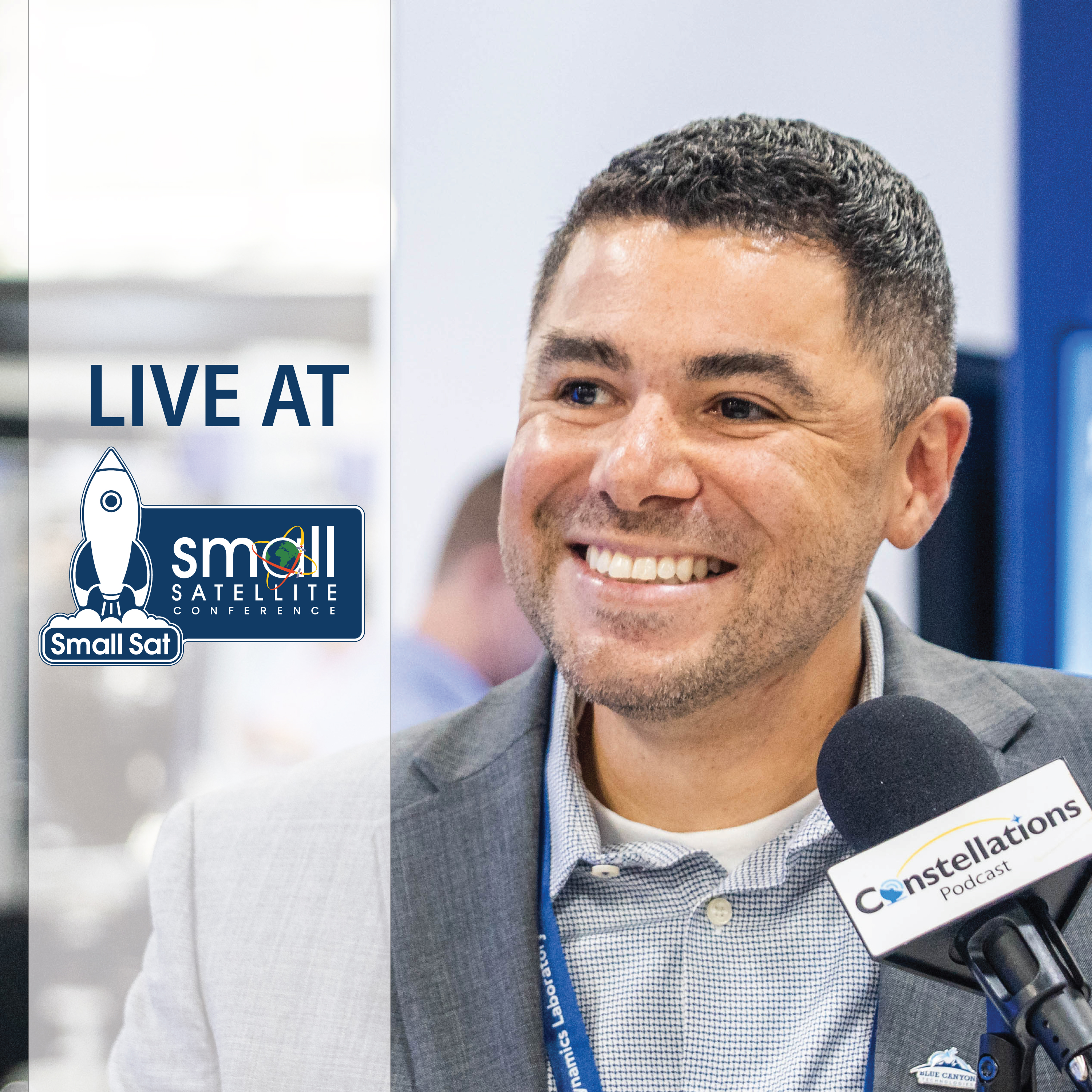

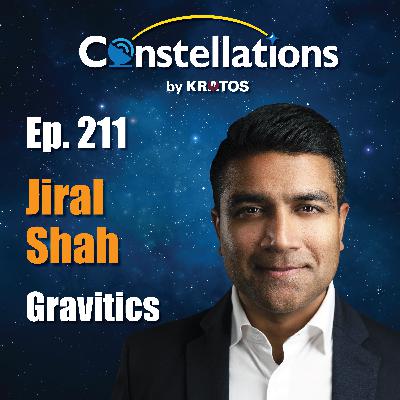
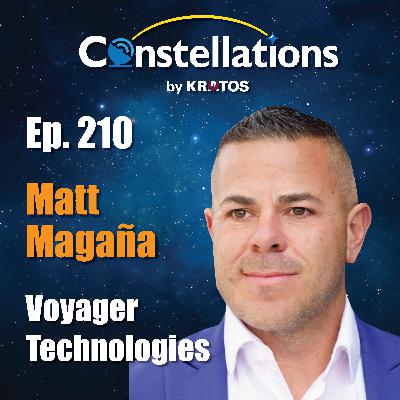
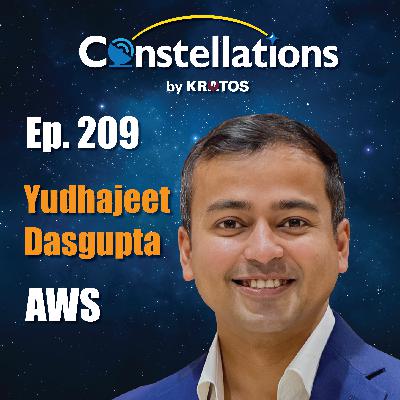



but OP o 8LLP oil ll d dv889